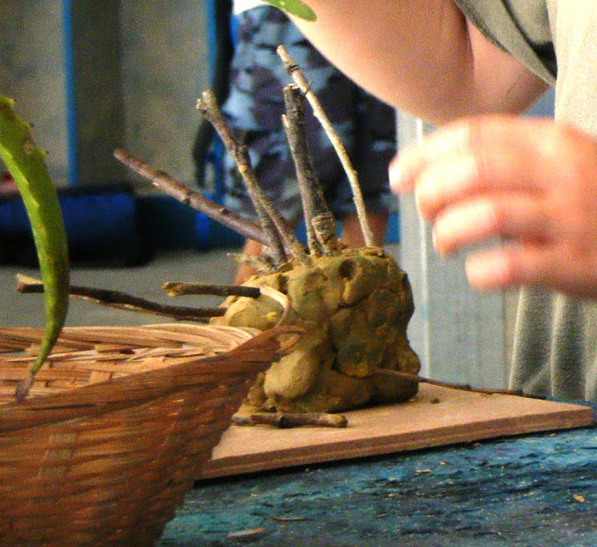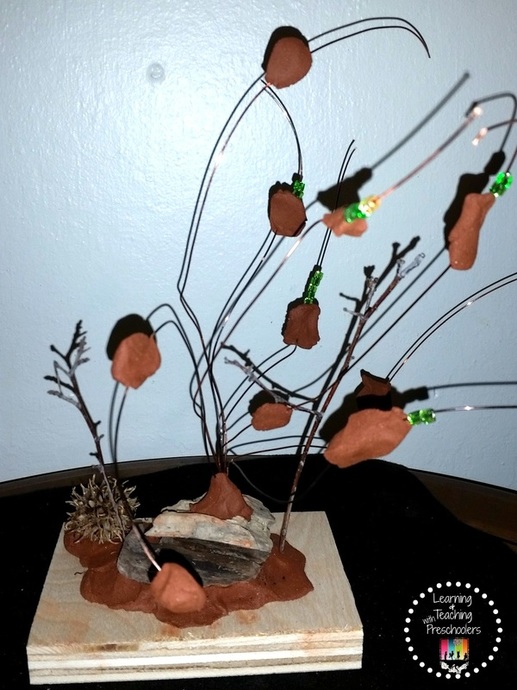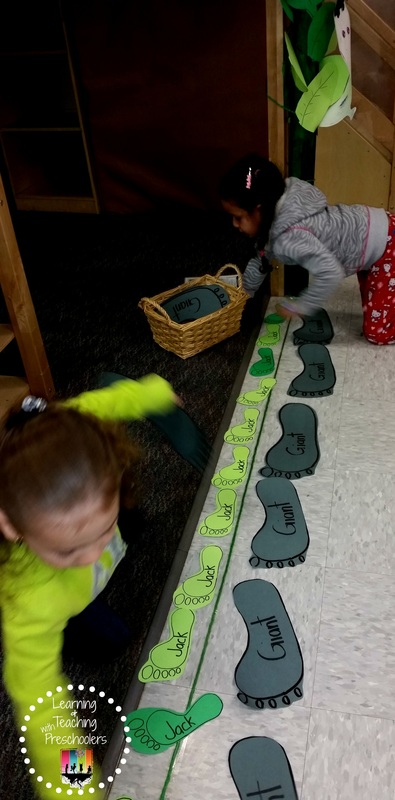Day TwentyfourEvery preschool child has had the opportunity to use play dough, but clay is a whole different world for them to explore. Why use clay? The beautiful thing about clay is that it needs no explanation or instruction. Children will instantly squeeze and pinch clay which is a perfect match to develop children’s large and small muscles. As children squeeze and manipulate clay it will also foster eye-hand coordination, self-expression, problem solving skills, discipline and it will also stimulate their imagination and creativity. Many new neurons and synapses in the brain are being generated when a child is engaged by the immediate tactile and visual feedback provided by clay. Stages of Clay Creations Stage One: Children will pinch, poke, roll and pound the clay. As they begin to pinch and poke the clay they learn that their actions cause the clay to change form. Stage Two: Children will begin to add found items to their clay sculptures. Stage Three: Children will roll and coil clay. Stage Four: Children will begin to roll and pinch clay into familiar objects. Provide other elements to enhance imagination and creativity.
Tools and Supplies AMACO Air Dry Clay, 25-Pound, White Sculpting Wheel Pottery Tool Set Wooden Clay Hammers Clay and Dough Pattern Rollers Wooden Clay Sculpture Knife Task:
Try using clay in your classroom this year. If your still not sure about purchasing a large amount of clay, try making a batch of air hardening modeling clay. Recipe Air Hardening Modeling Clay 2 cups baking soda 1 cup cornstarch (cornflour) 1.5 cups cold water (makes about 2 pounds - the recipe can be halved).
0 Comments
Day TwentythreeWhat is art? Sometimes teachers of young children use “art” to refer to spontaneous, open ended and often messy exploration of color or texture with little or no teachers direction or involvement. Let’s look at ways that we can explore new possibilities for ourselves as teachers, how we can begin to use the word “art” to describe a lively process of engagement with a range of materials, an engagement that is sensual and reflective, creative and deliberate, and that deepens and extends children’s learning. As children become more comfortable and skillful with these media, they are able to use them to communicate their understanding, emotions and questions. Children need to be viewed as competent, curious, full of knowledge, potential, and interested in connecting to the world around them. As teachers we need to use the arts as a way to anchor their inquires of learning, in the areas of…
We are able to do this by integrating art into out curriculum. When integrating art into the early childhood classrooms children are given an opportunity to learn through art in the context of their learning in other areas of the classroom curriculum. Children actively work with a knowledge base as they construct their understanding through art form. In the picture above, we had just finished reading the story Jack and the Beanstalk. This group of children wanted to know more about castles, so we sat down and took time to look up pictures and talk about what we were seeing in the pictures. Which then lead them to the art studio to create their own version of a castle. As they worked together they noticed the different shapes and textures of the castles. Each child kept reflecting back to the pictures that they had printed. Conversations where happening about what they could do with the castle once finished. When given the opportunity to build or expand their knowledge children come up with amazing ideas and concepts. The castle lead to the bean stalk and how tall could they make one. The following day this appeared and the collaboration began. "How tall do you think it is?" "Really tall, look it's taller then the loft." When we think of art as more than just art, we are creating an environment for children that will nurture their explorations and build on their knowledge.
Task: Set up art invitation in a way to expand children’s learning by sparking questions, interest and ideas. Base this invitation on a subject matter that you have discussed.  Day TwentytwoWhen you incorporate a deep learning environment, you become more of a mentor and facilitator of knowledge rather than the dominant content expert. What does digging deeper mean? When digging deeper or (scaffolding) with young children the teacher needs to provide children with support and guidance when learning something new.
Teaching with deep respect for children’s competencies requires you to engage your mind with theirs. Learning Together with Young Children As you begin to notice what is unfolding during children’s play and exploration you will begin to determine the support that will challenge them into a deeper study of learning. In the book Learning Together with Young Children they suggest that you use the “Yes and …” rule. When responding to children we need to be responding to each invitation with “Yes and…” in the video below I will give examples of how the "Yes and ..." rule works. Conclusion: When we want children to dig a little deeper in their learning we need to look closely at what they are doing.
Task: Try using the YES and rule today in your classroom. Come back tomorrow and share where the yes rule brought you and the children for the day. |
Welcome!I'm Tami Sanders creator of Learning and Teaching with Preschoolers, a blog to help teachers create magical moments for the young. Follow MeArchives
May 2024
|














































